Organisational Culture Assignment: Strategic Implementation By HR- A Case Of Nike
Question
Task: Write a well-researched and organised organisational culture assignmentpresenting a research proposal determining organizational culture and its influence on innovation management.
Answer
Chapter 1: Introduction
1.0 Introduction
The company Nike is recognised globally; it is a well-known brand for sports apparel, shoes and other accessories and equipment. In the current study topic explored herein organisational culture assignment evaluates about the maintenance of the organisational culture through various strategies implemented by the HR of the company Nike. Since Nike is a famous company need to maintain the organisational culture and for that it has to implement different strategies for the up gradation of the company Nike. In order to do so, the research aim has introduced a unique and compact current research project. On maintaining proper focus on research, the objectives formulated from the research issues have highly capable. The questions are also equipped in investigating detailed insight on the stated research issue. A complete structure of the overall dissertation has been provided in the chapter.
1.1 Background
The company Nike was founded on January 25, 1964 and originally known as Blue Ribbon Sports (BRS). Phil Knight and Bill Bowerman are the two founders of Nike Inc. formerly known as Blue Ribbon Sports. In addition to the manufacturing of sportswear and other equipment’s, the company also operates the retail store under the name “Niketown”. Nike has sponsored many high-profile athlete and sports team around the world by using the highly recognised trademarks of Swoosh logo and “Just Do It”. Athletes like Roger Federer, Mia Hamm, Tiger Woods and Michael Jordan have taken part in the endorsement of the company Nike. Nike Inc. have many rivalries, among all the top competitors include Anta, PUMA, FILA, Adidas, Reebok, Under Armour, ASICS, lululemon athletic, New Balance and Skechers.
1.2 Research Gap
Code Leadership standard are essential for the strong HR policies qualified by the Nike management. Nike is one of the famous brands of Sports Company known worldwide and it is based in Washington, US with revenue of 39,117 US dollars in 2019 but it was decreased to 37,403US dollars (Liu, 2021) due to the Covid-19 pandemic. By applying strong HR policies, the company is trying hard to develop the organisational culture for developing the revenue status in the international market.
1.3 Research Questions
The research project will emphasise on answering several questions that will be important for attaining the most practical and relevant research findings. These questions are mentioned below:
- How does Nike evaluate the organisational culture by different HR strategies
- How to maintain the organisational culture through various strategies
- How does the strategy implemented by the HR of Nike
- What are the problems arises in the maintenance of organisational culture
1.4 Research Aim
The research aim of the current study is to evaluate the organisational culture maintenance via different HR strategies of Nike. In order to do that, the study will also focus on different strategies that will be applied by the HR of Nike Inc.
1.5 Research Objectives
• To analyse different HR strategies of the company like Nike
• To understand the problems related to organisational culture maintenance
• To recommend strategies to develop the HR strategies to develop the organisational culture
1.6 Rationale
The organisational culture of Nike is focussed on creativity and innovation to provide products that matches the preferences of the consumers. Nike Inc. is known for cutting edge sports shoes, apparel and equipment’s. The organisational culture is important as it helps to improve the workflow and guides in the process of decision making. It maintains a clear culture that unifies the employees and promotes an organised work structure that helps people to work together with a purpose (Skinner, Smith, and Swanson, 2018).
According to Smith, Busi, Ball and Van Der Meer, (2019), to maintain the organisational culture, a variety of factors are created, including the values of founder and preferences; industry demands, goals and early values.
1.7 Structure of the Research
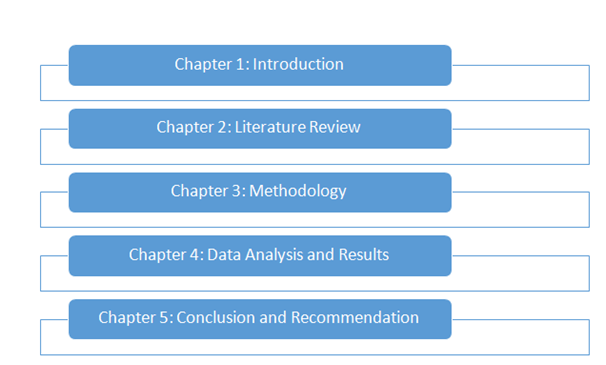
Figure 1: Structure of Research
Chapter 2: Literature Review
2.1 Introduction
The current chapter of the research consists of the literature portion of the work. The topic that has been evaluated here is maintaining the organisational culture through various strategies by the HRM in the way of mitigating the barrier of obstruction. The current scenario in the business market highly affecting by the organisation belief system, patterns and method of understanding of an employee that actually replicates the organisational culture.
2.2. Concept of Organisational Culture
Organisational culture is the collection of overall values, practices and expectations that helps to guide or instruct every single person within a team of an organisation. It defines the exact way that structured the behaves that should be maintain within an organisation. The idea and beliefs that introduce by the leader and gradually reinforced by various strategies to shape the employee’s outlook, behaviour and understanding level. A strong culture is that which completely embedded in the rules and regulation of the business culture of an organisation through understanding the requirement of changes and keeping sustainable changes in order to stick with the basic core values of the organisation (Liu, Tsui, and Kianto, 2021). A variation of organisation maintains the culture strongly by adopting the sustainable changes through various strategies.
2.3 Types of Organisational Culture
According to Oh and Han (2020), there are four types of organisational culture model which can include Clan Culture, it is a friendly culture with the collaboration of merging like a family member or larger section that working with the same principal values to achieve the same goal within an organisation. But the group remove the between competencies rather highly valued connection and consensus are given the importance.Adhocracy Culture, this culture merges the flexibility with being focused in work. This culture adopts the changes as soon as a new tab opened up and the employees are tremendously proactive in adapting changes with circumstances. This type of culture is mainly full of high energy and agile towards the work.
2.4 Denison Organisational Culture Model
The Denison cultural model measures mainly four typical traits of culture and leadership. The four traits are involvement, mission, adaptability and consistency. Adaptability aligns with creating culture. Adaptability towards the need, objective, customer focus and creating changes for organisational learning. Involvement meaning engaging and aligning with the people in the way to generate more responsibility. Which results an autonomous commitment towards the organisational value (Wahyuningsihet al., 2019). This collaborative culture has a wide range of variable flexibility range. The consistency empowers a clear set of core values that helps to take a firm consistent decision
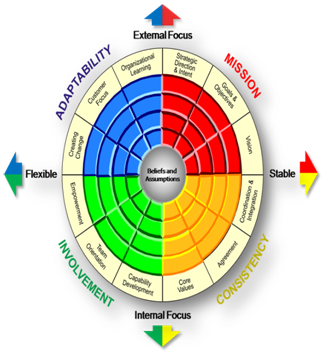
Figure:2: Denison Organisational Cultural Model
(Source:Wahyuningsih, et al., 2019)
2.5 Role of HR in maintaining Organisational Culture
A solid culture of any company is as essential for business and as for the employee of the company. And in the long run this can only be maintained by the company HRM. As a human resource professional, it is their duty to strengthen their company culture and shape the business pattern to sustain in the long run (Al-Musadieqet al., 2018). The maintained culture will always help the company and employee to proceed further in a positive way of thought.
2.4 Challenges in maintaining Organisational Culture
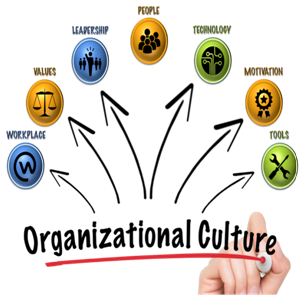
Figure:3: Organisational Culture
(Source: Li et al.,2018)
As per Gulha, (2018), the above picture depicts that an organisational culture consists of various elements including morals, values, ethics, leadership, people, different motivations and tools. So, as usual there is a tremendous number of challenges in the way to successively keeping intact the organisational culture. The main challenges are ambiguity, very poor challenges and inconsistency as a result of poor communication. Another three major issue that remained unsolved are miscommunication, inconsistency and lack of reinforcement (Madaio,2020).
2.5 Conceptual Framework
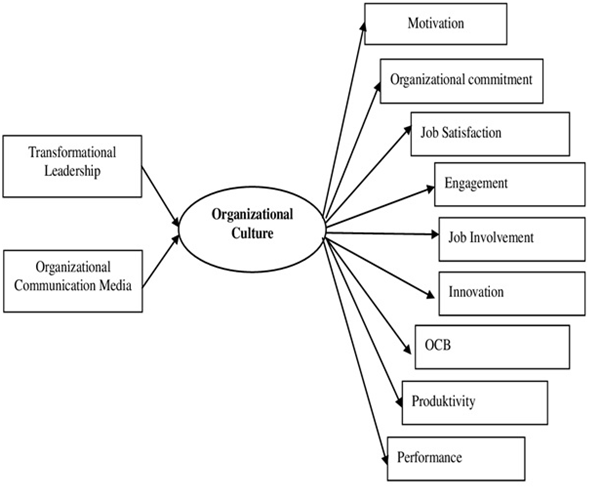
Figure:4: Conceptual Framework in Organisational Culture
(Source: Febriani and Yancey,2019)
2.6 Gaps in literature
The literature review lacks support in maximum literature portion. Many authors have worked on the strategies that can help in the change in organisational culture but there very little reference on this section how it broadly effecting the accountability of dimension to correct it. So, there arise a gap in the literature which creating a barrier in the way to gain the knowledge in depth. Also, maximum insufficient information is given that are unable to create any kind of decision in idealise the view point of agreement between the desired culture and acceptable culture. Understanding the modern culture and co relating with the existing culture it makes the definition more strength. Though the gap makes the literature review portion week yet authentic valuable paper helps to generate a basic idea about the culture that are adopting very firstly by today’s organisation. The organisational team defining the living culture and acting on the traditional culture hold back the company value that became a barrier to drive the cultural organisation.
Chapter 3: Methodology
3.0 Introduction
The research concerning on investigating on the maintenance of organisational culture through various strategies which can be implemented by the HR has been conducted systematically by following the structured research methodology. The method of data collection followed in a strict manner also presented here. The whole research work done by maintaining the accessible ethical issues within the given time plan of the project.
3.1 Research Philosophy
The selected paradigm for this research work is Positivism Approach. This philosophy always attempts to garner the positive and assured outcomes by the process of investigation which conducted for the research work to solve the problem. As the research based on the applying strategies to strengthen the organisation culture in Nike by their HR, the work needs a positive outlook to the problem to more up gradation of the developed strategies to earn the maximum profit (Samy and Robertson,2018).
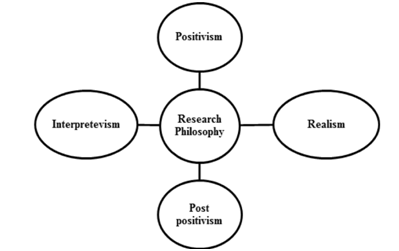
Figure:5: Research Philosophy
(Source:Samy and Robertson,2018)
3.2 Research Approach
The current research followed the top down approach based on the deductive method as to analyse the strategies to update the organisational culture in Nike, the author needs to gather the through information about the internal short comings within Nike in the various culture background. So the statistical data based on the previously researched article evaluated completely and thus no primary data was collected. The deductive approach is based on the theoretical basis whereas the inductive one generates a number of mathematical data gained from one particular analysis (Kunene and Mthethwa, 2020).
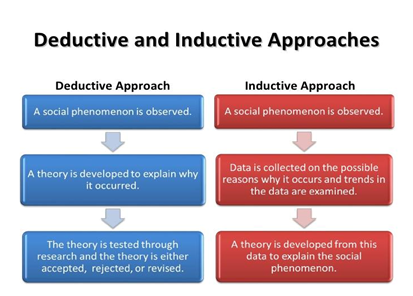
Figure:6: Research Approach
(Source:Woiceshyn and Daellenbach)
3.3 Research Design
This research work chooses the descriptive design as research design as it helps to formulate an in depth idea about all the findings targeting the research issue about the modified and trendy strategies in the field of up gradation of organisation culture which form a formal logic for the company’s goal and theories through values, beliefs and shared assumption (Rahi,2017). The descriptive design helps completely in the secondary qualitative research pattern to study in detail.
3.4 Research Strategy
As per Hanington and Martion (2019), research strategy helps to conduct the research through proper investigation. This depend on the type of the research conducted whether it is primary or secondary, qualitative or quantitative or in both ways. For the collection of secondary data, research strategies are more dependent on the sources, from which the data collected. Hence, for this research, for collecting qualitative data, literature review strategy has been used, where the previous researches of relevant authors have been reviewed critically on the case study of Nike to understand their strategical outcome on the organisational culture.
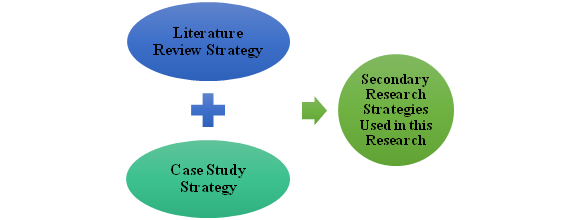
Figure:7: Research Strategy
(Source:Hanington and Martion ,2019)
3.5 Data Sources
The sources of data of this research are mainly secondary. Inclusions of primary data have been excluded due to two major reasons. Firstly, the involvement of human participants cannot be reliable in matter of accuracy and secondly, it is unable to find some accurate statement from the strategy in application of organisation culture. The Nike would not be able to offer some perfect information. So, a case of accessibility issues can arise. So, the researcher has selected only secondary data sources such as previous books, research papers, peer article reviewed journals and authentic online data bases of government report for qualitative data. Secondary sources are more reliable due to their previous scrutinized research before publishing.
3.6 Data Analysis Techniques
The research has involved the data collection in two forms. Previous literature and case study. As a result, two different type of techniques have been used in the process of collection of data. For the analysis on the literature available on the strategies adopted by Nike in organisational culture, the technique of critical analysis has been used (Sherif,2018). The previous information also collected from scrutinized authentic source to understand the matter deeply.
On the other hand, From the method of case study thematic analysis of case studies has been followed to understand the issues in the matter of different culture in all micro business that are creating a barrier to reach out globally more productively. To understand the internal and external barriers of Nike the case studies have been done very accurately. Moreover, the analysis also based on the previous researches to justify the point of view represented here.
3.7 Time Plan
The research has been conducted over a period of 22 weeks where the tasks have been divided on the grounds of the chapters of the thesis. The following Gantt chart presents the time division in a very clear manner, which has been exactly followed for this research.
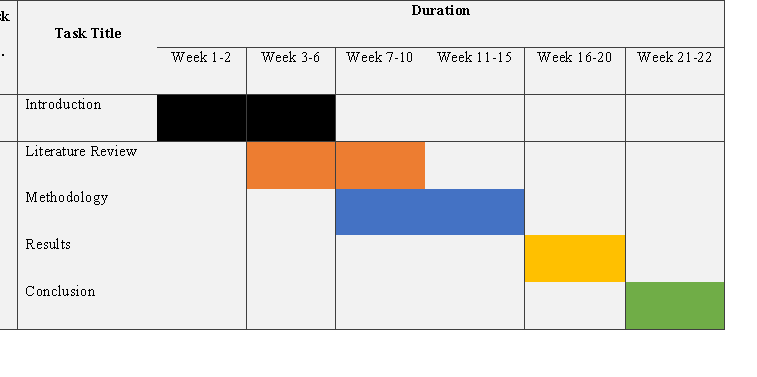
Table:1: Gantt Chart for The Project
(Source: Author)
References
Alharahsheh, H.H. and Pius, A., 2020. A review of key paradigms: Positivism VS interpretivism. Global Academic Journal of Humanities and Social Sciences, 2(3), pp.39-43.https://www.gajrc.com/media/articles/GAJHSS_23_39-43_VMGJbOK.pdf
Al-Musadieq, M., Nurjannah, N., Raharjo, K., Solimun, S. and Fernandes, A.A.R., 2018. The mediating effect of work motivation on the influence of job design and organisational culture against HR performance. Journal of Management Development. https://www.emerald.com/insight/content/doi/10.1108/JMD-07-2017-0239/full/html
Altay, N., Gunasekaran, A., Dubey, R. and Childe, S.J., 2018. Agility and resilience as antecedents of supply chain performance under moderating effects of organisational culture within the humanitarian setting: a dynamic capability view. Production planning & control, 29(14), pp.1158-1174. https://pearl.plymouth.ac.uk/bitstream/handle/10026.1/12469/PPC_HSC_Agility_Resilience_ Paper%20Final%20submitted%20version.pdfsequence=1&isAllowed=y
Bailey, B., Benson, A.J. and Bruner, M.W., (2019). Investigating the organisational culture of CrossFit. International Journal of Sport and Exercise Psychology, 17(3), pp.197-211. https://g4yd.nipissingu.ca/wp-content/uploads/sites/72/2014/03/Investigating-the-organisational-culture-of-CrossFit.pdf
Chatterjee, A., Pereira, A. and Bates, R., (2018). Impact of individual perception of organisational culture on the learning transfer environment. International Journal of Training and Development, 22(1), pp.15-33. https://onlinelibrary.wiley.com/doi/abs/10.1111/ijtd.12116
Childs, M. and Jin, B., (2018). Nike: An Innovation Journey. In Product Innovation in the Global Fashion Industry (pp. 79-111). Palgrave Pivot, New York. https://link.springer.com/chapter/10.1057/978-1-137-52349-5_4 Corti, L., 2018. Data collection in secondary analysis. The SAGE handbook of qualitative data collection, pp.164-181.https://books.google.com/bookshl=en&lr=&id=X0VBDwAAQBAJ&oi=fnd&pg=PA164&dq= research+approach+in+secondary+research&ots=AW6bbq0Awd&sig=05BjHLhYB24CMRcosr5O7nKna34
Effect of motivation, leadership, and organisational culture on Paais, M. and PATTIRUHU, J.R., (2020). satisfaction and employee performance. The Journal of Asian Finance, Economics, and Business, 7(8), pp.577-588. https://www.koreascience.or.kr/article/JAKO202026061031735.page
Eschenfelder, K.R., Shankar, K. and Williams, R.D., 2018. Making the case for data archiving: The changing “value proposition” of social science data archives. Proceedings of the Association for Information Science and Technology, 55(1), pp.123-132.https://asistdl.onlinelibrary.wiley.com/doi/abs/10.1002/pra2.2018.14505501014
Febriani, D.M. and Yancey, G.B., (2019). The effect of integration approaches and human resources initiatives on changes in organisational culture and employee attitudes during a merger. The Psychologist-Manager Journal, 22(2), p.108. https://psycnet.apa.org/record/2019-32851-004
Groysberg, B., Lee, J., Price, J. and Cheng, J., 2018. The leader’s guide to corporate culture. Harvard business review, 96(1), pp.44-52. https://egn.com/dk/wp-content/uploads/sites/3/2020/01/HBR-The-Leaders-guide-to-Corporate-Culture.pdf
Gulua, E., (2018). Organisational culture management challenges. European Journal of Interdisciplinary Studies, 4(1), pp.67-79. https://www.academia.edu/download/55928337/14th_ICSS_2018_Proceedings_Book_Vol2_ISBN_9781642553970.pdf#page=550
Hanington, B. and Martin, B., 2019. Universal methods of design expanded and revised: 125 Ways to research complex problems, develop innovative ideas, and design effective solutions. Rockport publishers.https://books.google.com/bookshl=en&lr=&id=SFnBDwAAQBAJ&oi=fnd&pg=PP1&dq= research+strategy+in+secondary+research&ots=BDYBmnPYnR&sig=SZrak2OJGkPnAE2goOERntU5Lpg
Harrison, T. and Bazzy, J.D., (2017). Aligning organisational culture and strategic human resource management. Journal of Management Development. https://e-tarjome.com/storage/btn_uploaded/2019-09-29/1569751493_10157-etarjome-English.pdf
Khwae, G.B. and Amoozegar, A., (2020). Examining the Importance of Organisational Culture, Employee Commitment and Leadership on Project Performance of Organisations in Malaysia. https://ijefm.co.in/v4i8/Doc/23.pdf
Kunene, M.W. and Mthethwa, P., 2020. The The deductive and inductive instructional approach controversy in Eswatini context.Organisational culture assignment Global Journal of Foreign Language Teaching, 10(2), pp.139-158.https://un-pub.eu/ojs/index.php/GJFLT/article/view/4852
Li, W., Bhutto, T.A., Nasiri, A.R., Shaikh, H.A. and Samo, F.A., (2018). Organisational innovation: the role of leadership and organisational culture. International Journal of Public Leadership. https://www.emerald.com/insight/content/doi/10.1108/IJPL-06-2017-0026/full/html
Liu, G., Tsui, E. and Kianto, A., (2021). Knowledge-friendly organisational culture and performance: A meta-analysis. Journal of Business Research, 134, pp.738-753. https://www.sciencedirect.com/science/article/pii/S0148296321003842
Liu, X., (2021), March. NIKE’s General Company Analysis Based on It 2020 Annual Report. In 6th International Conference on Financial Innovation and Economic Development (ICFIED 2021) (pp. 799-803). Atlantis Press. https://www.atlantis-press.com/article/125954238.pdf
Madaio, M.A., Stark, L., Wortman Vaughan, J. and Wallach, H., (2020), April. Co-designing checklists to understand organisational challenges and opportunities around fairness in ai. In Proceedings of the 2020 CHI Conference on Human Factors in Computing Systems (pp. 1-14). https://dl.acm.org/doi/abs/10.1145/3313831.3376445
Martínez-Caro, E., Cegarra-Navarro, J.G. and Alfonso-Ruiz, F.J., (2020). Digital technologies and firm performance: The role of digital organisational culture. Technological Forecasting and Social Change, 154, p.119962. https://www.sciencedirect.com/science/article/pii/S0040162519312193
Melnikovas, A., 2018. Towards an explicit research methodology: Adapting research onion model for futures studies. Journal of Futures Studies, 23(2), pp.29-44.https://jfsdigital.org/wp-content/uploads/2019/01/03-Melnikovas-Onion-Research-Model.pdf
Oh, S.Y. and Han, H.S., (2020). Facilitating organisational learning activities: Types of organisational culture and their influence on organisational learning and performance. Knowledge Management Research & Practice, 18(1), pp.1-15. https://www.tandfonline.com/doi/abs/10.1080/14778238.2018.1538668
Page, L., Boysen, S. and Arya, T., (2019). Creating a culture that thrives. Organisation Development Review, 51(1), pp.28-35. https://www.cbservices.org/images/news/culture-that-thrives.pdf
Pratiwi, P.Y., Ferdiana, R. and Hartanto, R., (2018), July. An analysis of the new employee onboarding process in startup. In 2018 10th International Conference on Information Technology and Electrical Engineering (ICITEE) (pp. 603-608). IEEE. https://down.documentine.com/2879702d1d8d6644b64b4b1d232517e9.pdf
Rahi, S., 2017. Research design and methods: A systematic review of research paradigms, sampling issues and instruments development. International Journal of Economics & Management Sciences, 6(2), pp.1-5.https://pdfs.semanticscholar.org/d957/e1a07a961a572ce70f7d5845cb423ac8f0be.pdf
Samy, M. and Robertson, F., 2017. From positivism to social constructivism: an emerging trend for CSR researchers. In Handbook of research methods in corporate social responsibility. Edward Elgar Publishing.https://www.elgaronline.com/view/edcoll/9781784710910/9781784710910.00036.xml
Schoonenboom, J. and Johnson, R.B., 2017. How to construct a mixed methods research design. KZfSSKölnerZeitschriftfürSoziologie und Sozialpsychologie, 69(2), pp.107-131.https://link.springer.com/article/10.1007/s11577-017-0454-1
Sherif, V., 2018, May. Evaluating preexisting qualitative research data for secondary analysis. In Forum: qualitative social research (Vol. 19, No. 2, pp. 26-42). FreieUniversität Berlin.https://www.qualitative-research.net/index.php/fqs/article/download/2821/4211inline=1
Skinner, J., Smith, A.C. and Swanson, S., (2018). Conclusion: Leadership, Culture and Invention. In Fostering Innovative Cultures in Sport (pp. 241-270). Palgrave Macmillan, Cham. https://link.springer.com/chapter/10.1007/978-3-319-78622-3_8
Smith, M., Busi, M., Ball, P. and Van Der Meer, R., 2019. Factors influencing an organisation’s ability to manage innovation: a structured literature review and conceptual model. Managing Innovation: What Do We Know About Innovation Success Factors, pp.69-90. https://www.worldscientific.com/doi/abs/10.1142/9781786346520_0004
Sukiennik, M. and Bk, P., (2018). Applying lean management solutions in the context of the organisational culture of energy sector enterprises. InynieriaMineralna, 20. http://yadda.icm.edu.pl/baztech/element/bwmeta1.element.baztech-a809c855-4a41-49c4-b578-f3ca3251423f/c/IM_2-2018-a15.pdf
Wahyuningsih, S.H., Sudiro, A., Troena, E.A. and Irawanto, D., (2019). Analysis of organisational culture with denison’s model approach for international business competitiveness. Problems and perspectives in management, (17, Iss. 1), pp.142-151. http://www.irbis-nbuv.gov.ua/cgi-bin/irbis_nbuv/cgiirbis_64.exeC21COM=2&I21DBN=UJRN&P21DBN=UJRN&IMAGE_FILE_ DOWNLOAD=1&Image_file_name=PDF/prperman_2019_17_1_15.pdf
Woiceshyn, J. and Daellenbach, U., 2018. Evaluating inductive vs deductive research in management studies: Implications for authors, editors, and reviewers. Qualitative Research in Organisations and Management: An International Journal.https://www.emerald.com/insight/content/doi/10.1108/QROM-06-2017-1538/full/html












